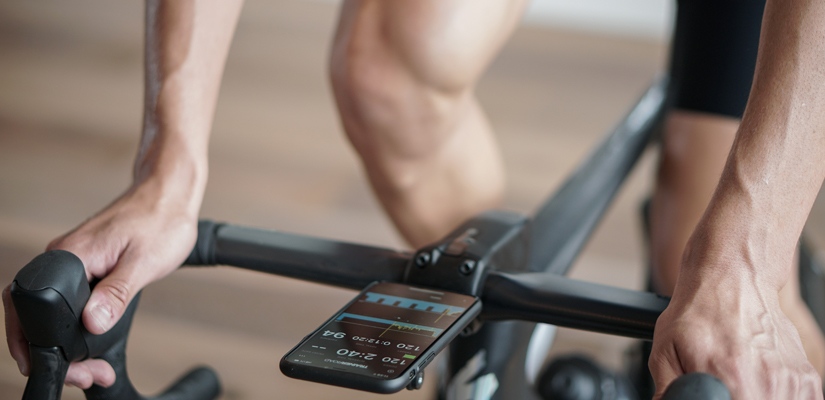Cramping 101: Prevention and Treatment

Exercise-associated muscle cramps can be a frequent issue for endurance athletes. If you experience exercise-associated muscle cramps, you can use sodium intake, hydration, stretching, and maybe even some hot sauce to proactively treat and prevent your muscle cramps.
For more information on cramping and hydration check out Ask a Cycling Coach Ep 260.
Find links to mentioned studies and join the discussion on the TrainerRoad Forum: here.
What are Muscle Cramps?
Simply put, muscle cramps are involuntary muscle contractions. When a muscle is cramping, your body is recruiting many muscle fibers at once and contracting those muscle fibers vigorously. This sudden contraction of muscle fibers can be quite painful, and it can make it difficult to continue using a muscle safely during exercise without damaging or tearing the muscle tissue.
Exercise-associated muscle cramps can come in many shapes and forms. You might feel the inkling of a cramp well before your muscle locks up, or your muscle fibers may seize up suddenly without warning. The duration, intensity, and timing of a cramp can also vary. What really makes muscle cramps so challenging is that they seem to be caused by various things, and the “why” behind exercise-associated muscle cramps is not yet conclusive.
Why Muscles Cramp During Exercise
As common as exercise-associated muscle cramps are, why they happen during exercise is not definitive. In large part, we don’t completely understand why we cramp because it’s difficult to measure the mechanics of cramping. Many variables can occur in conjunction with muscle cramps, such as sodium depletion, dehydration, over-hydration, glycogen depletion, and muscular fatigue.
With that said, there are two primary theories when it comes to muscle cramping. One being that muscle cramping happens when we’re dehydrated and sodium depleted. The other theory being that cramps occur when our muscles have been overloaded with muscular and neuromuscular fatigue. What we do know is that dehydration, overhydration, muscle fatigue, and sodium loss are all variables linked to muscle cramping. Athletes can use what we know about hydration, sodium, nutrition, and stretching to their advantage when working to alleviate and prevent muscle cramps.
Adaptive Training
Get the right workout, every time with training that adapts to you.
Check Out TrainerRoadHow to Alleviate Muscle Cramps
The good news is that there are a number of things you can do to alleviate cramps during a workout or a race. If you’re on the bike and your muscles begin cramping, you can relieve muscle cramps by stretching, taking in sodium, or using a neurological distraction.
Stretching
Stretching your cramped muscle can ease and even stop the cramp. If you’re on the bike and you feel the inkling of a cramp coming on, try standing up and stretching out that muscle while you’re coasting or descending. Try to relax your locked up muscle and stretch it gently. When you do try stretching, be careful and mindful of where you are riding. It’s always a good idea to stop if possible, but if you’re in a race, make sure to give space to the riders around you.
Stretching can be beneficial, but it might not always work while you’re riding. When you cramp, you may have multiple muscles cramping up. Stretching out one muscle might give another muscle a chance to seize up. Stretching doesn’t necessarily get rid of a cramp either. It can relieve a cramp momentarily, but that cramp may come back as you continue to pedal. Stretching is most helpful when your cramps are mild, you’re close to the finish line, or you can safely stop your workout and stretch properly. But if you’re in a race and you have a ways to go to the finish line, you may want to consider doing something else in addition to stretching.
Sodium
Taking in some salt while you ride might be something else you can do to relieve your cramps. Research suggests that athletes can alleviate muscle cramps by ingesting salt while they’re cramping. Taking in salt while you’re cramping doesn’t give your body enough time to absorb, distribute, or utilize the sodium. However, the theory is that taking in sodium sends a message to your body that sodium is on the way. If your body does indeed have a sodium deficiency, this can alleviate the cramp.
Distractions
Another thing you can do in addition to stretching is take in a substance that distracts you from the cramps in your legs. In alignment with the theory on neuromuscular fatigue, there is a belief that consuming foods or liquids that stimulate the receptors in your mouth can disrupt the cramping signals in the muscles. This means eating something that “distracts” your nerves and thereby eases your cramp. This is why some athletes try consuming pickle juice or hot sauce when they are cramping.
Preventing Muscle Cramps with Sodium and Hydration
While there are ways to get to the finish line with a cramp, it’s best to avoid cramps as much as possible. Not only are they painful and distracting, but cramps can damage muscle tissue and cause injuries. Making an effort to nail your hydration, fuel, and sodium intake can go a long way in prevention.
Preventing cramps starts with identifying patterns. Keep a record of when you cramp, the weather conditions, hydration, and nutrition. That way, you can tackle sodium intake and water intake on an individual level. For example, if you find that you cramped during a really hot workout, you can look at your notes to examine the amount of sodium and water you were ingesting before and during.
This approach can help you establish a baseline for hydration and sodium. You can then focus on the right hydration and electrolyte consumption before, during, and after workouts. All of which can lead to improvements in your performance and cramp prevention.
For more cycling training knowledge, listen to Ask a Cycling Coach — the only podcast dedicated to making you a faster cyclist. New episodes are released weekly.